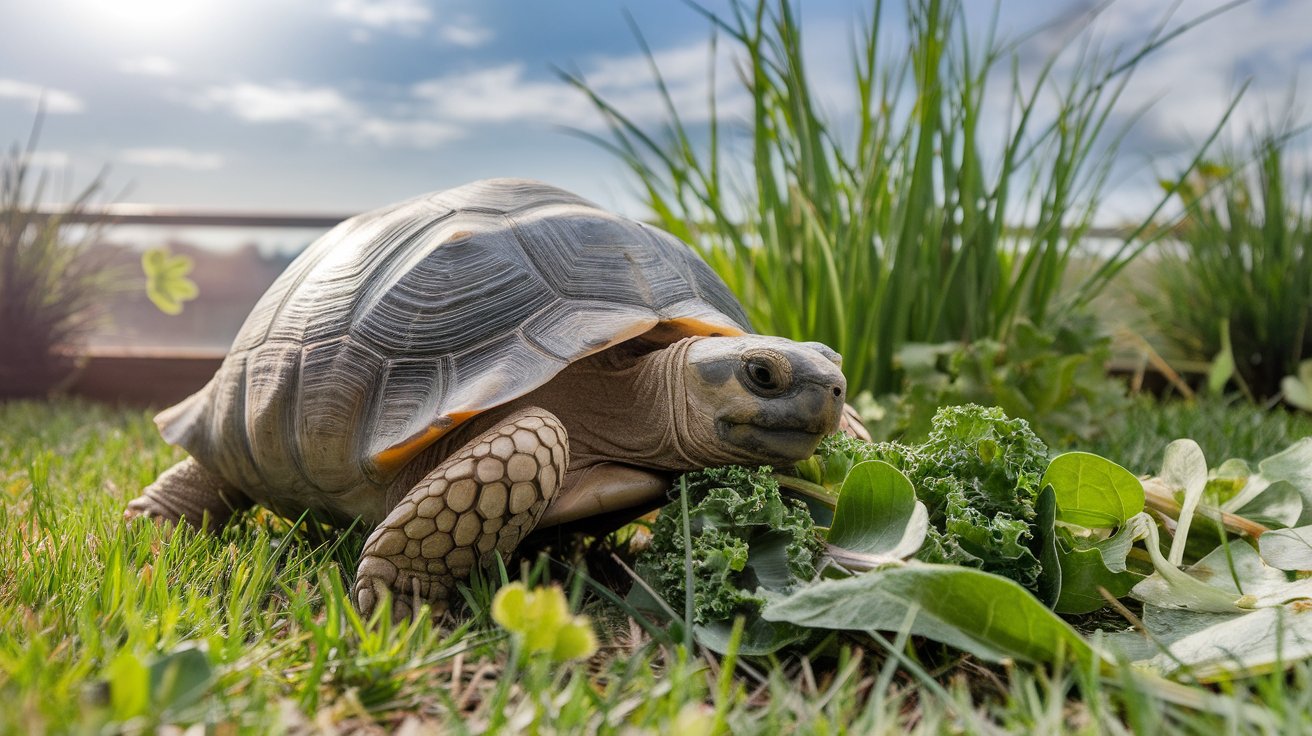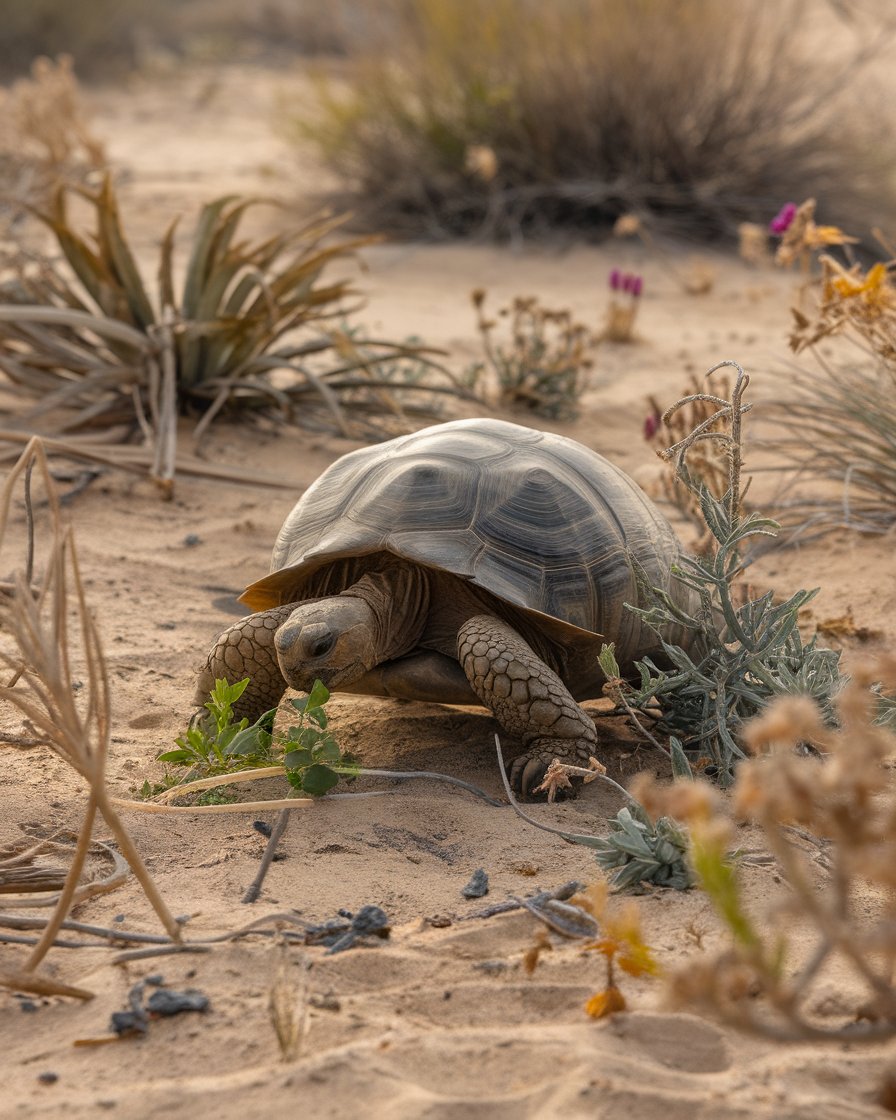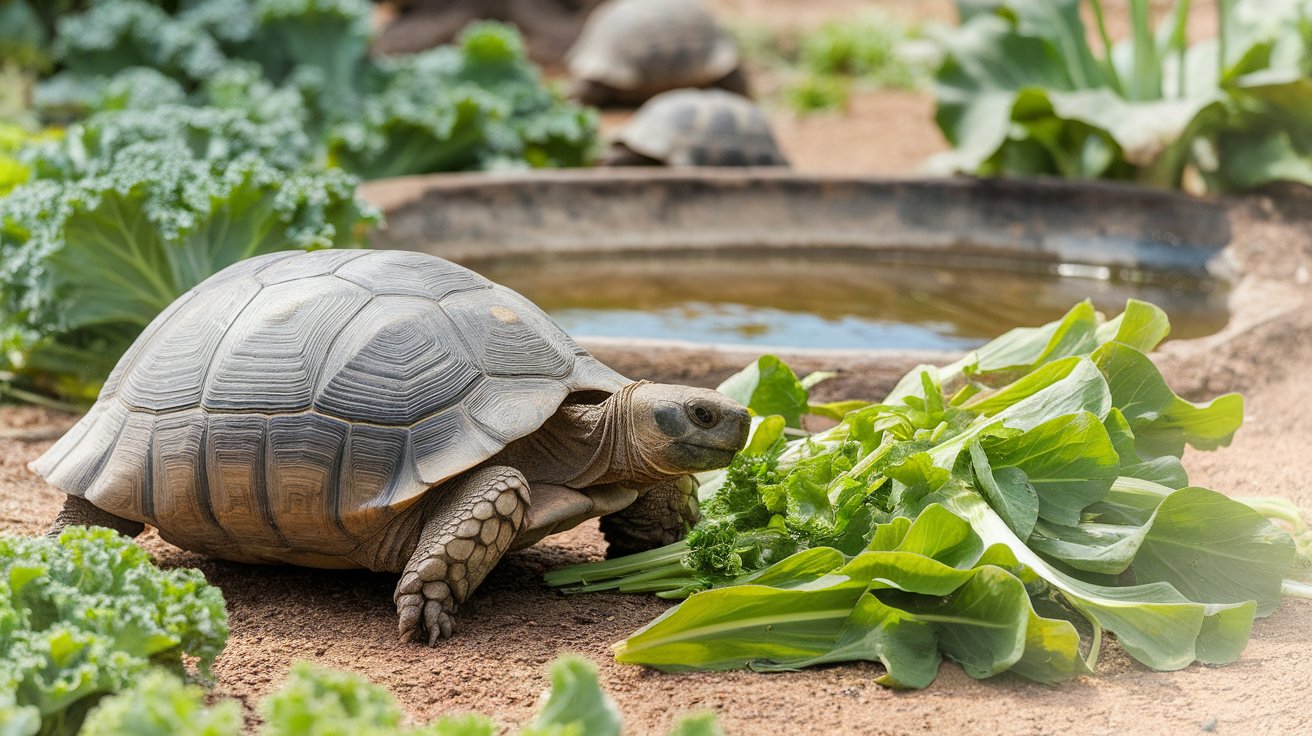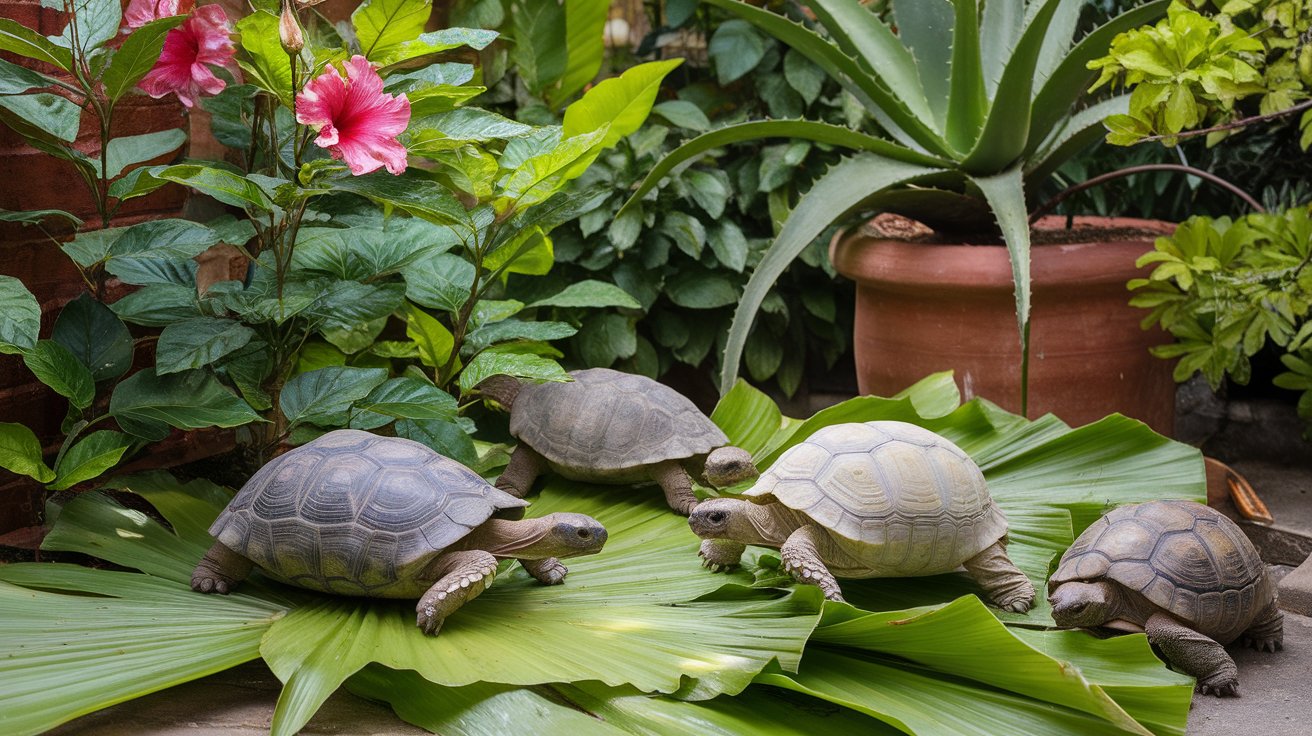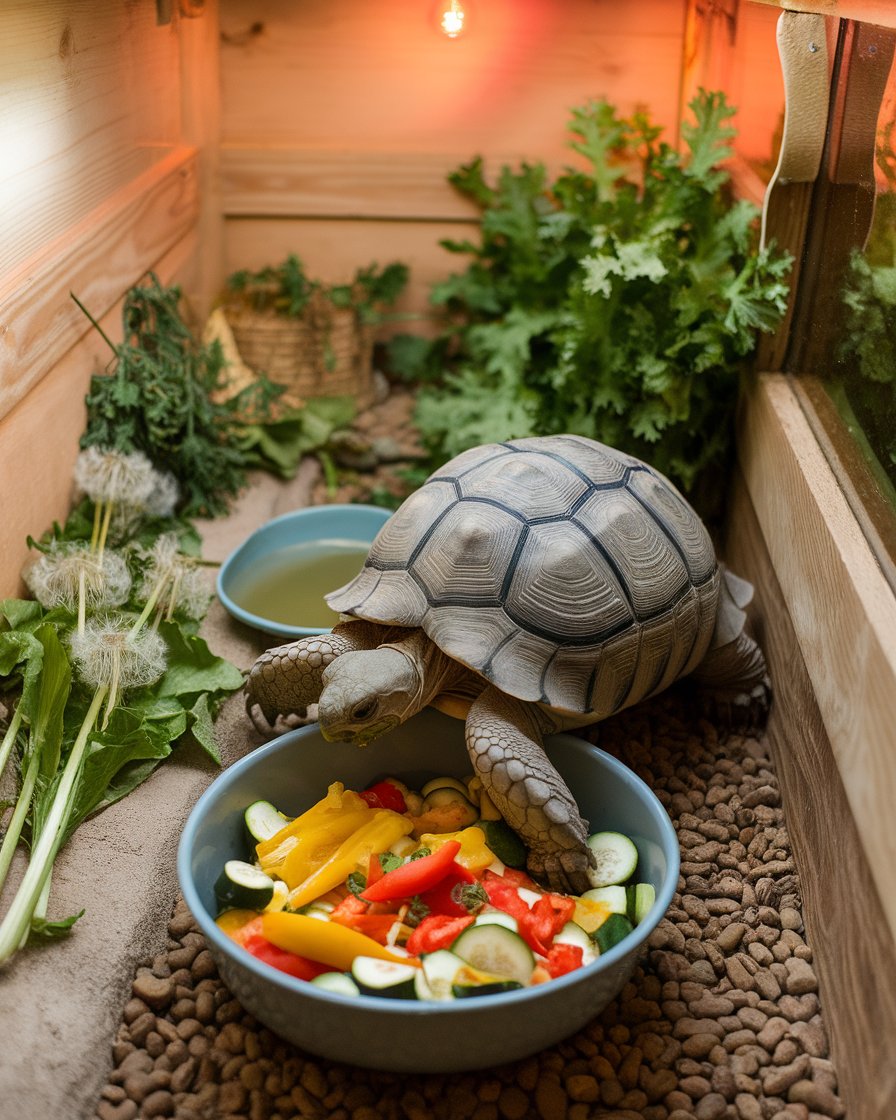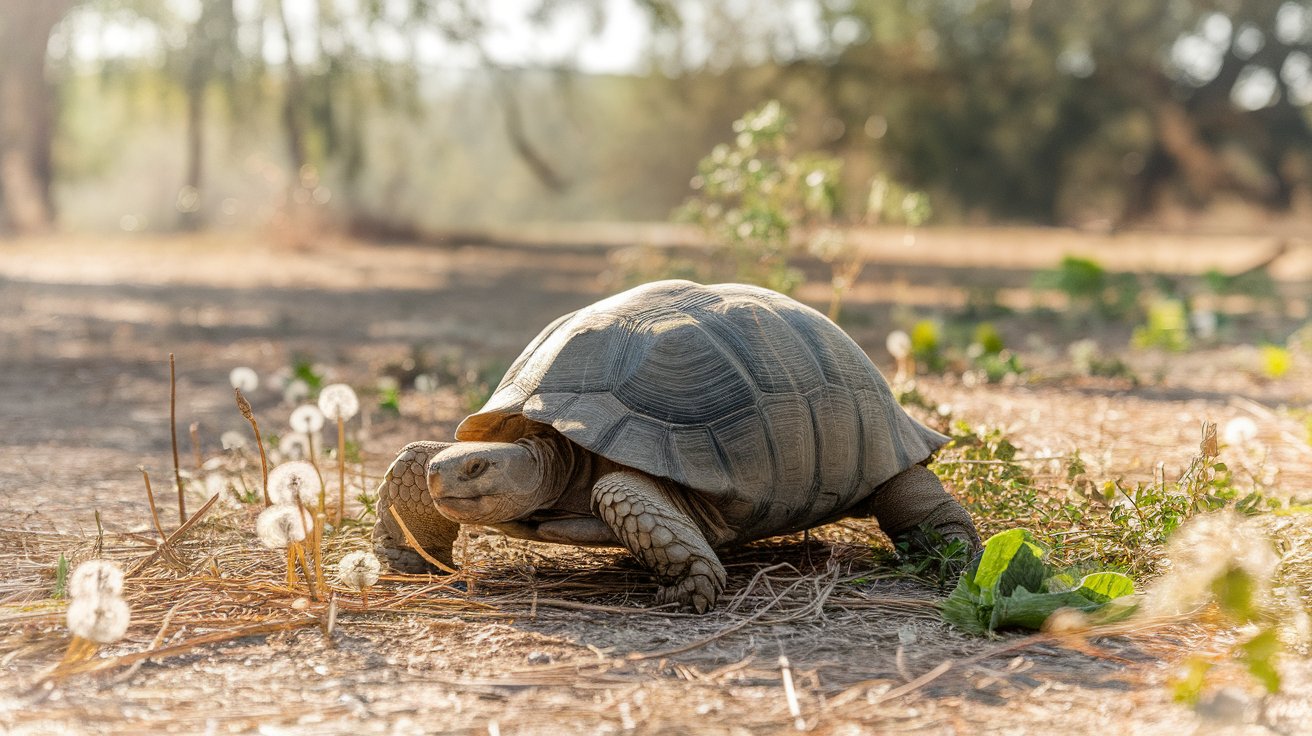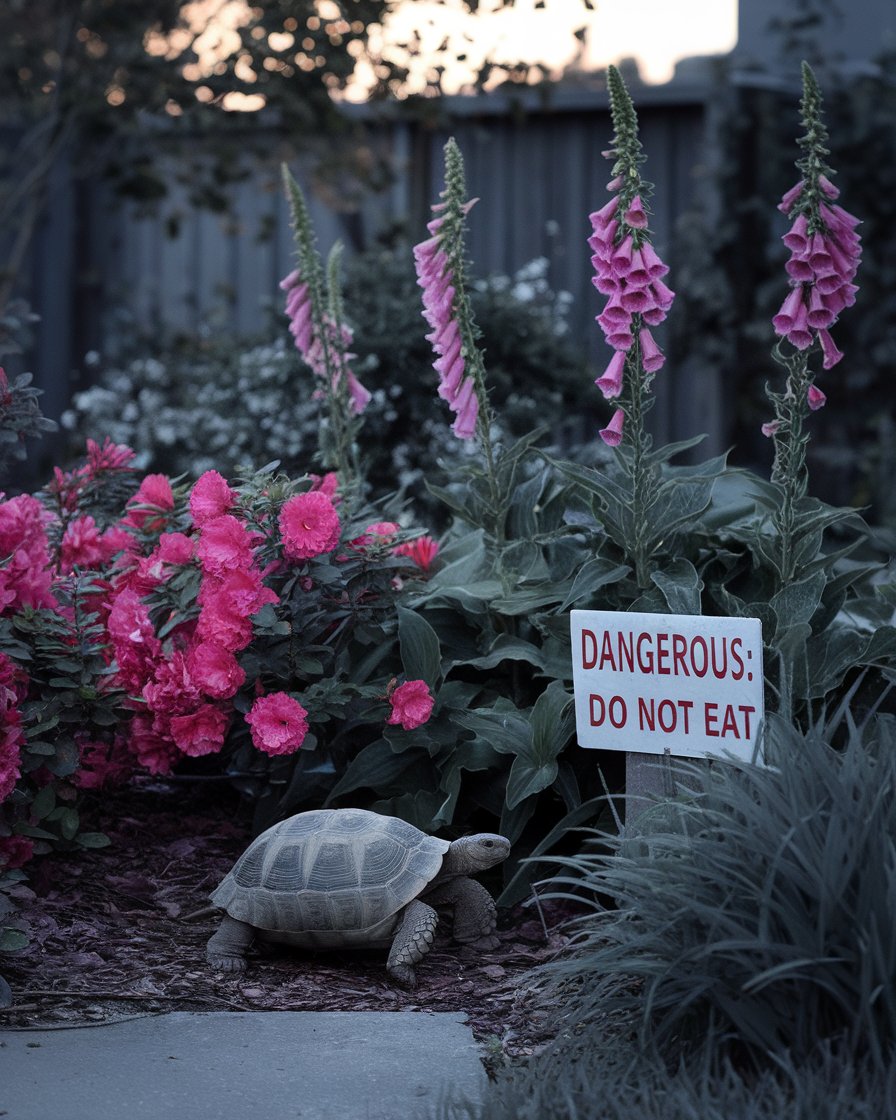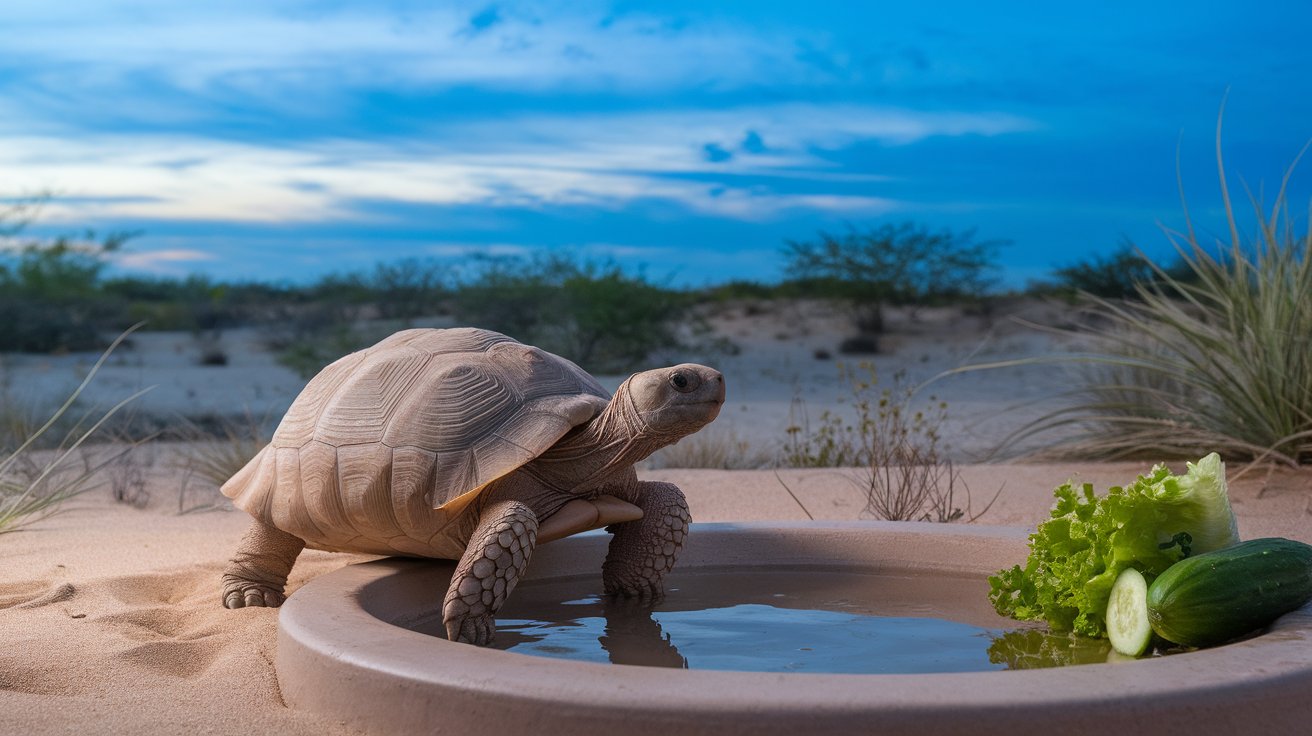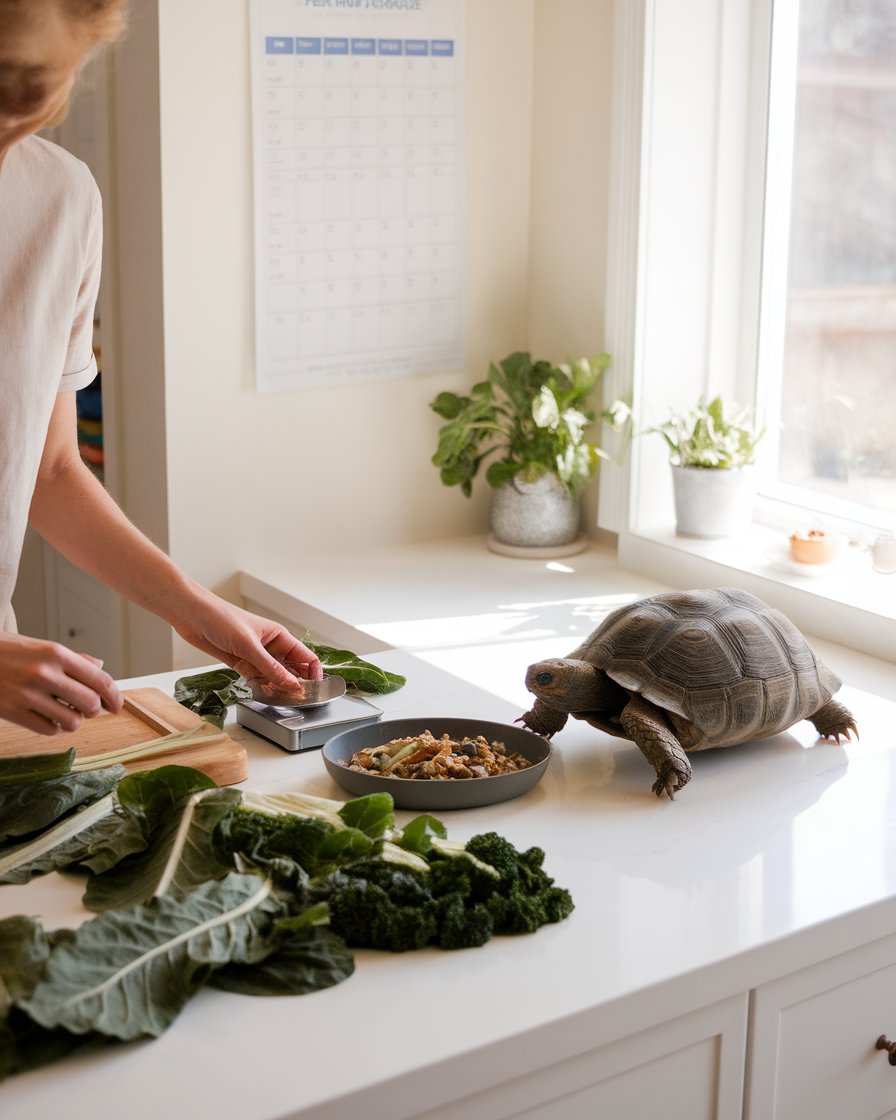Introduction
Russian tortoises, like many other tortoise breeds, thrive on a herbivorous diet rich in plants and vegetables. In the wild, these tortoises eat a variety of grasses, leaves, and weeds to sustain themselves, and replicating this diet in captivity is essential for their well-being. A healthy diet for a Russian tortoise should include leafy greens like collards and vegetables such as melon and berries. Since they have evolved to survive in harsh environments, it’s important to provide a diet that mimics what wild tortoises eat, offering a range of fibrous foods and ensuring they receive essential nutrients like vitamin D3.
For owners of Russian tortoises, getting the right amount of food is crucial to maintaining their health. These tortoises may need to supplement their diet with calcium, especially for strong shell development. It’s also vital to avoid feeding them foods high in protein, as this can cause serious health issues. Regular monitoring of your tortoise’s diet will help them live a long and healthy life.
Key Takeaways
-
Russian tortoises thrive on a plant-based, high-fiber diet, which should closely mimic their wild diet for optimal health.
-
Providing access to safe, natural greens like dandelion leaves and clover encourages natural grazing behavior in tortoises.
-
A balanced diet rich in dark leafy greens like kale and collards, supplemented with calcium, is vital for shell and bone health.
-
Avoid feeding foods high in oxalic acid, such as spinach, as these can disrupt calcium absorption and harm tortoise health.
-
Regular feeding every other day for adults and daily for younger tortoises supports natural growth and digestion.
-
Maintaining proper portion sizes based on the tortoise’s shell size helps prevent obesity and promotes long-term well-being.
Natural Diet of Russian Tortoises
Russian tortoises are herbivorous reptiles, naturally thriving on a diet that consists mostly of plants in their natural habitat. In the wild, they rely on a wide range of grasses, leaves, and flowers to meet their nutritional needs. These tortoises have evolved to survive in arid environments, where food sources can be sparse, so they have developed the ability to thrive on a high-fiber diet. Replicating their natural diet in captivity is essential for maintaining their health. Owners should focus on providing a variety of leafy greens and weeds to mimic the diversity of a wild tortoise’s food sources. Supplementing their diet with calcium and other essential nutrients is important for promoting bone health and overall well-being.
Healthy Russian Tortoise Diet: Understanding What Tortoises Eat
-
Natural Diet Replication
In the wild, Russian tortoises thrive on a plant-based diet that includes grasses, leaves, and flowers. Replicating this in captivity is crucial for their well-being. Owners should focus on providing a diverse array of leafy greens like kale and dandelion leaves to mimic the tortoise’s natural food sources. This diet supports their digestive system and ensures they receive proper nutrients. -
Importance of Fiber
Russian tortoises have evolved to survive in arid environments by consuming high-fiber diets. High-fiber foods like weeds and broadleaf plants are critical for maintaining their digestive health. Fiber also helps in preventing obesity, a common issue in captive tortoises. Ensuring a fiber-rich diet replicates the conditions in which they would naturally thrive. -
Calcium Supplementation
For proper bone and shell health, Russian tortoises require calcium supplementation. In the wild, tortoises naturally obtain calcium from plants and the environment, but in captivity, it’s vital to provide cuttlebone or calcium carbonate. This supplementation prevents metabolic bone disease and supports overall strength. -
Avoiding Harmful Foods
Not all plants are safe for Russian tortoises. Avoid feeding them iceberg lettuce, spinach, or beet greens, as these contain oxalic acid, which hinders calcium absorption. Owners should also steer clear of protein-rich foods like meat or dairy, as tortoises are strictly herbivores and cannot digest animal products properly. -
Vegetables for Hydration and Nutrition
In addition to leafy greens, Russian tortoises benefit from vegetables that provide hydration and essential nutrients. Vegetables like zucchini, bell peppers, and squash can be added sparingly to their diet. These vegetables offer a natural source of water, keeping tortoises hydrated while delivering vitamins and minerals. -
Variety for Long-Term Health
To prevent dietary deficiencies, it’s essential to maintain variety in a tortoise’s diet. Incorporating a mixture of safe greens, vegetables, and occasional fruits like prickly pear can ensure the tortoise gets a broad spectrum of vitamins and minerals. A varied diet helps prevent common health problems, such as malnutrition or digestive issues.
Grazing Habits
Russian tortoises are known for their grazing habits, spending much of their time foraging for food. In the wild, they consume a variety of grasses, broadleaf weeds, and other plants. To replicate this in a home enclosure, it’s essential to provide access to safe, edible plants like dandelion leaves, plantain, and clover. These tortoises often eat in small amounts throughout the day, mimicking their natural grazing behavior. Offering a range of safe weeds and vegetables will ensure they get the necessary fiber and nutrients. Avoid feeding them iceberg lettuce and other plants high in oxalic acid, which can interfere with calcium absorption and lead to health issues.
Key Nutritional Components
Providing a balanced diet is crucial for the long-term health of Russian tortoises. Their diet should primarily consist of dark leafy greens such as kale, collard greens, and mustard greens, which are rich in vitamins and minerals. Supplementing with calcium, in the form of cuttlebone or calcium carbonate, is necessary to promote proper shell and bone development. Additionally, a small amount of vegetables like butternut squash and occasional fruits, such as prickly pear, can be offered sparingly. It’s best to avoid foods that are high in oxalic acid, such as spinach and beet greens, as these can hinder calcium absorption. Maintaining a diverse and nutrient-rich diet helps prevent common health problems associated with poor nutrition.
Crucial Foods for Russian Tortoises
Russian tortoises have specific dietary needs that must be met to keep them healthy and thriving. In their natural habitat, these tortoises primarily feed on fibrous vegetation such as grasses and leafy plants. Their herbivorous diet is rich in fiber and low in protein, which is crucial for their digestive health. When kept as pets, it’s important to mimic their wild diet as closely as possible to ensure their overall well-being. A well-rounded diet includes dark leafy greens, vegetables, and safe plants. Supplementing with calcium, especially for younger tortoises, is vital for their bone development. Owners should always prioritize variety in their tortoise’s diet to help them get all the essential nutrients they need to stay healthy and active.
Case Study: Optimizing a Pet Tortoise’s Diet to Mimic Natural Feeding Patterns
In a 2020 study conducted by the Turtle and Tortoise Preservation Group (TTPG), researchers analyzed the diets of captive Russian tortoises to determine the most effective strategies for replicating their natural feeding habits. The case study followed a sample of 50 Russian tortoises over the course of one year, with the aim of improving their overall health by implementing a diet similar to what wild tortoises eat. The study found that those tortoises fed primarily on a diet of dark leafy greens, safe wild plants like dandelion greens, and occasional vegetables such as zucchini and bell peppers, demonstrated improved digestive health and stronger shell growth compared to those on commercially available tortoise food. Additionally, calcium supplementation, especially in younger tortoises, was shown to prevent the development of metabolic bone disease. The research emphasized the importance of avoiding high-oxalic acid foods, which negatively impacted calcium absorption.
Recommended Vegetables
Vegetables play an important role in the diet of a Russian tortoise. Alongside leafy greens, tortoises can enjoy a variety of vegetables that provide a range of vitamins and minerals. Zucchini, bell peppers, and squash are excellent choices to include in their meals. These vegetables not only help maintain a balanced diet but also offer hydration, as they contain high water content. It is crucial, however, to avoid vegetables that are high in oxalic acid, like spinach, as they can interfere with calcium absorption. Including a diverse array of vegetables ensures that your pet tortoise remains healthy while keeping their diet interesting. Rotate different vegetables to keep their meals varied and nutritious.
Safe Plants and Greens
In addition to vegetables, incorporating safe plants and wild greens into a Russian tortoise’s diet is highly beneficial. Dandelion greens, clover, and turnip greens are great options that provide natural fiber, calcium, and vitamins essential for a tortoise’s health. These can often be found in gardens or purchased from stores. However, it’s important to ensure any plants gathered from outside are free from pesticides or chemicals. Including these natural greens will enhance the diet of your pet tortoise and bring them closer to the nutritional profile they would experience in the wild. Supplementing with herbs such as parsley or alfalfa can further enrich their meals and provide a well-rounded, safe diet.
Toxic Foods to Avoid
When caring for a pet tortoise, it’s essential to know which foods are harmful to their health. Although tortoises are herbivorous and thrive on a diet rich in plants and vegetables, there are certain foods that must be avoided at all costs. Toxic plants and human foods can cause severe health issues and even be fatal if consumed. Whether your tortoise roams indoors or outdoors, it’s crucial to be aware of the dangerous food items that could be within reach. Knowing what to avoid ensures the long-term well-being of your tortoise, so owners must take extra care to keep these toxic foods out of their diet.
Common Toxic Plants
Many common garden plants are toxic to tortoises and should be avoided. Plants such as azaleas, oleander, and foxgloves are particularly dangerous because they contain harmful compounds that can lead to digestive issues, heart problems, and even death if ingested by your tortoise. Even some plants that seem harmless, like certain succulents, can pose a risk. For tortoise owners, it’s important to regularly check your pet’s environment and ensure they don’t have access to any of these plants. If you allow your tortoise to graze outside, thoroughly inspect the area for any harmful plants before letting them roam freely.
Forbidden Human Foods
While it may be tempting to share human food with your pet tortoise, there are several foods that can be harmful or toxic. Items such as chocolate, avocado, and rhubarb are particularly dangerous and should never be fed to a tortoise. These foods contain compounds that are difficult for tortoises to process and can lead to serious health complications. Additionally, feeding tortoises protein-rich foods like meat or dairy can cause long-term damage, as their digestive systems are not built to handle animal products. Always stick to a plant-based diet tailored to your tortoise’s specific needs to avoid any potential health risks.
“Animals are such agreeable friends – they ask no questions; they pass no criticisms. It is our duty to ensure their care, including the food we provide.” – Gerald Durrell
Feeding Frequency and Portion Sizes
Feeding your tortoise the right amount at the right frequency is crucial for their health and well-being. Russian tortoises, like many tortoise species, have specific dietary needs that depend on their age and activity level. Younger tortoises typically need more frequent feedings, as they are in a stage of rapid growth, requiring daily meals. On the other hand, adult tortoises can thrive on a feeding schedule that consists of meals every other day. This mimics the grazing habits of wild tortoises, allowing them to digest their food at a natural pace. Offering the right balance of nutrients, while avoiding overfeeding, helps maintain a healthy digestive system and prevents weight-related health issues.
Ideal Feeding Schedule
The feeding schedule for a tortoise should be carefully planned to mirror its natural behaviors in the wild. For adult tortoises, feeding every other day is typically sufficient. This pattern gives their digestive system enough time to process the food fully and prevents overfeeding. In contrast, young tortoises should be fed daily to support their growth and development. During each feeding, it’s important to offer fresh vegetables and leafy greens, such as collard greens or dandelion leaves, which provide vital nutrients and hydration. Maintaining consistency in their feeding schedule is key to ensuring their long-term health and preventing digestive issues.
Portion Guidelines for Healthy Weight
Determining the right portion size for your tortoise is equally important as the frequency of feeding. A good rule of thumb is to offer enough food to match the size of the tortoise’s shell, with an emphasis on leafy greens and other plant-based foods. A palm-sized portion of greens like cabbage or kale is ideal, ensuring a variety of plants to provide a wide range of vitamins and minerals. Avoid overfeeding, as excess food can lead to obesity, which can cause health complications. Regular weight checks can help fine-tune portion sizes, ensuring that your tortoise maintains a healthy and active lifestyle.
Conclusion
In conclusion, maintaining a proper tortoise diet is essential for the long-term health of your Russian tortoise. Providing a variety of fruit and vegetables, alongside leafy greens such as kale and safe wild plants, helps mimic their natural feeding patterns. Owners should focus on a diet that closely resembles what tortoises eat in the wild, avoiding harmful foods like those high in oxalic acid, and ensuring calcium supplementation for bone health.
It’s also important to remember that not all tortoises are the same—understanding the specific needs of your type of tortoise is key. Whether you have a Russian or Sulcata tortoise, sticking to a herbivore diet with minimal protein is crucial for avoiding many health issues. Regular check-ins with local pet stores or veterinarians can help owners adjust the diet as needed, ensuring that your tortoise remains healthy and active for years to come.

